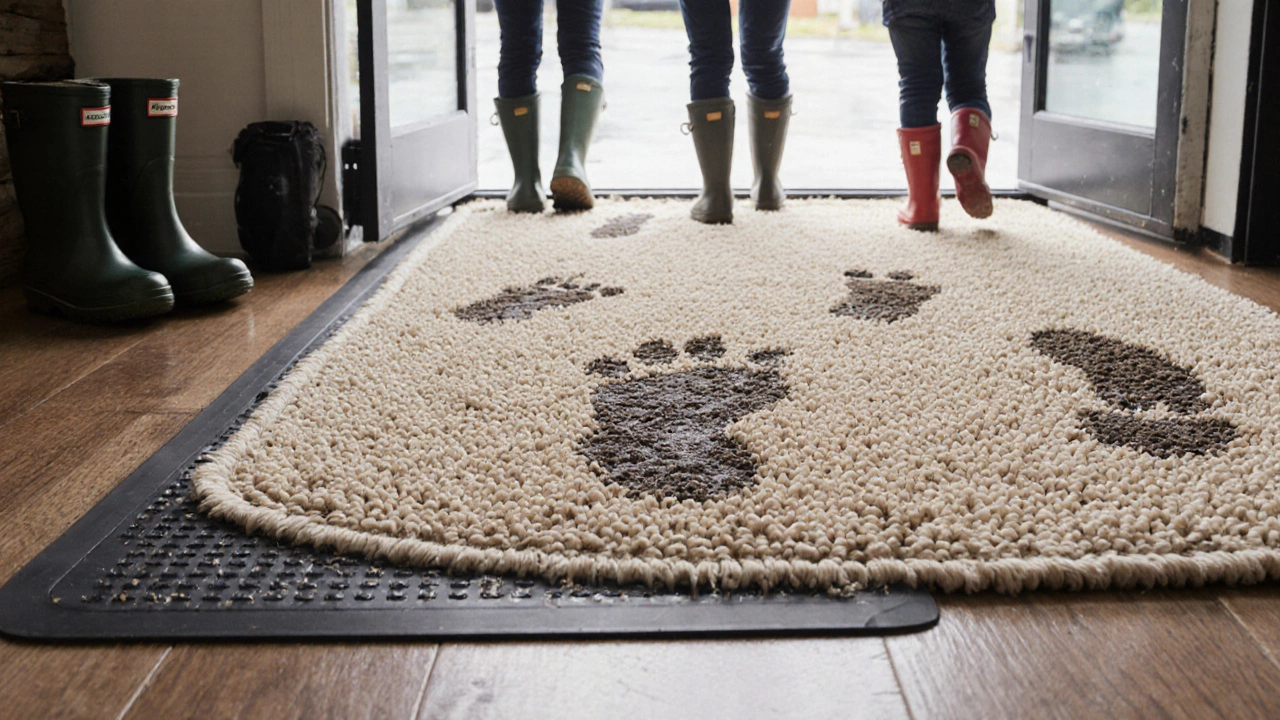High-Traffic Rug: Best Types, Durability, and Buying Tips
When you need a rug that can handle kids, pets, and constant footfall, a high-traffic rug, a floor covering built to withstand heavy daily use without fraying, fading, or flattening. Also known as heavy-duty rug, it’s not just about looks—it’s about lasting through spills, shoes, and daily chaos. Most people assume all rugs are the same, but the truth is, some fall apart in months while others stay strong for a decade. The difference? Material, construction, and how it’s made.
A durable rug, a floor covering designed to resist wear, crushing, and color loss under constant use isn’t just thick—it’s built smart. Wool is a top choice because it springs back after being stepped on, resists stains naturally, and doesn’t shed like synthetic fibers. Nylon, especially solution-dyed nylon, is another winner: it’s tough, easy to clean, and holds up against UV fading. Avoid thin polyester or low-pile acrylic rugs—they look fine at first, but flatten fast and look worn out by year two.
Construction matters just as much as material. A tightly woven or looped pile (like a Berber style) holds up better than long, fluffy fibers that get matted down. Look for rugs with a strong backing—jute or latex-backed rugs stay flat and don’t slide around, which reduces edge wear. And don’t skip the pad. A good rug pad isn’t just for comfort—it protects the rug from friction against the floor and extends its life by up to 50%.
Size and placement matter too. A high-traffic rug in a hallway or entryway needs to be large enough to catch dirt before it spreads. If it’s too small, people step on the edges, which causes fraying. In living rooms, go for a rug that fits under the front legs of your sofa and chairs—it keeps the whole setup grounded and reduces wear on the floor beneath.
And while color and pattern might seem like style choices, they’re actually practical tools. Darker shades hide dirt better, but busy prints and textures disguise wear and stains even better. A solid white rug might look clean, but it shows every speck of dust. A multi-colored or textured rug? It hides messes and still looks intentional.
Real homes don’t have perfect conditions. Pets scratch. Kids track in mud. Shoes come off at the door—then get dragged across the rug. The best high-traffic rug doesn’t fight these realities—it works with them. That’s why the top performers in user reviews aren’t the most expensive or trendy ones—they’re the ones that survived three years of chaos and still look good.
What you’ll find below are real-world tests and buyer insights on exactly which rugs hold up, which materials you should avoid, and how to spot a rug that’s built to last—not just marketed to impress. No fluff. No hype. Just what works in homes that actually live in them.
What Type of Rug Holds Up the Best? Real-World Durability Tested
Discover which rug materials and constructions truly last in high-traffic homes, with real-world insights on wool, nylon, and synthetics for pets, kids, and busy households.
